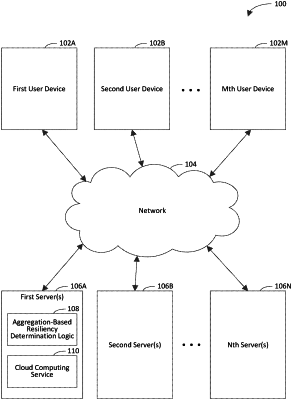| CPC H04L 43/16 (2013.01) [G06F 16/285 (2019.01)] | 20 Claims |

|
1. A system comprising:
a memory; and
a processing system coupled to the memory, the processing system configured to:
analyze a first reaction of a cloud computing service to execution of a first chaos event during a time frame by calculating a first plurality of service health indexes that correspond to a first plurality of respective time periods;
analyze a second reaction of the cloud computing service to execution of a second chaos event during the time frame by calculating a second plurality of service health indexes that correspond to a second plurality of respective time periods, each service health index of the first plurality of service health indexes and the second plurality of service health indexes indicating an extent to which a respective measurement of performance of the cloud computing service satisfies a respective criterion during a respective time period of the first plurality of respective time periods or the second plurality of respective time periods, respectively;
provide a first resiliency score by analyzing the first plurality of service health indexes for the first chaos event;
provide a second resiliency score by analyzing the second plurality of service health indexes for the second chaos event; and
provide an aggregated resiliency score by aggregating the first and second resiliency scores, the aggregated resiliency score representing resiliency of the cloud computing service to the first and second chaos events.
|